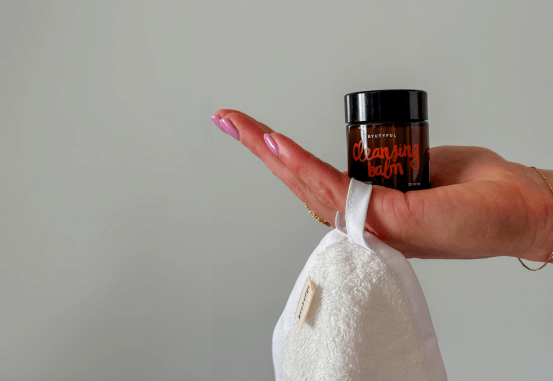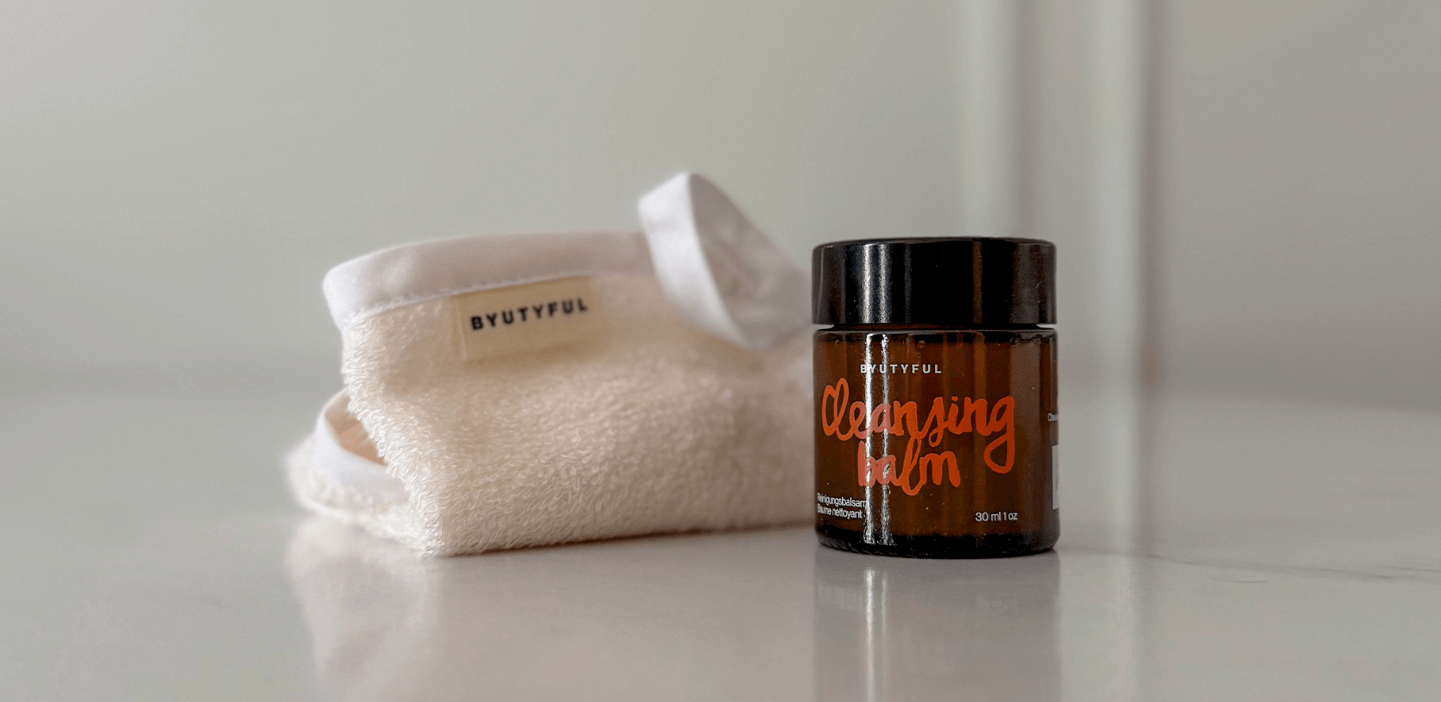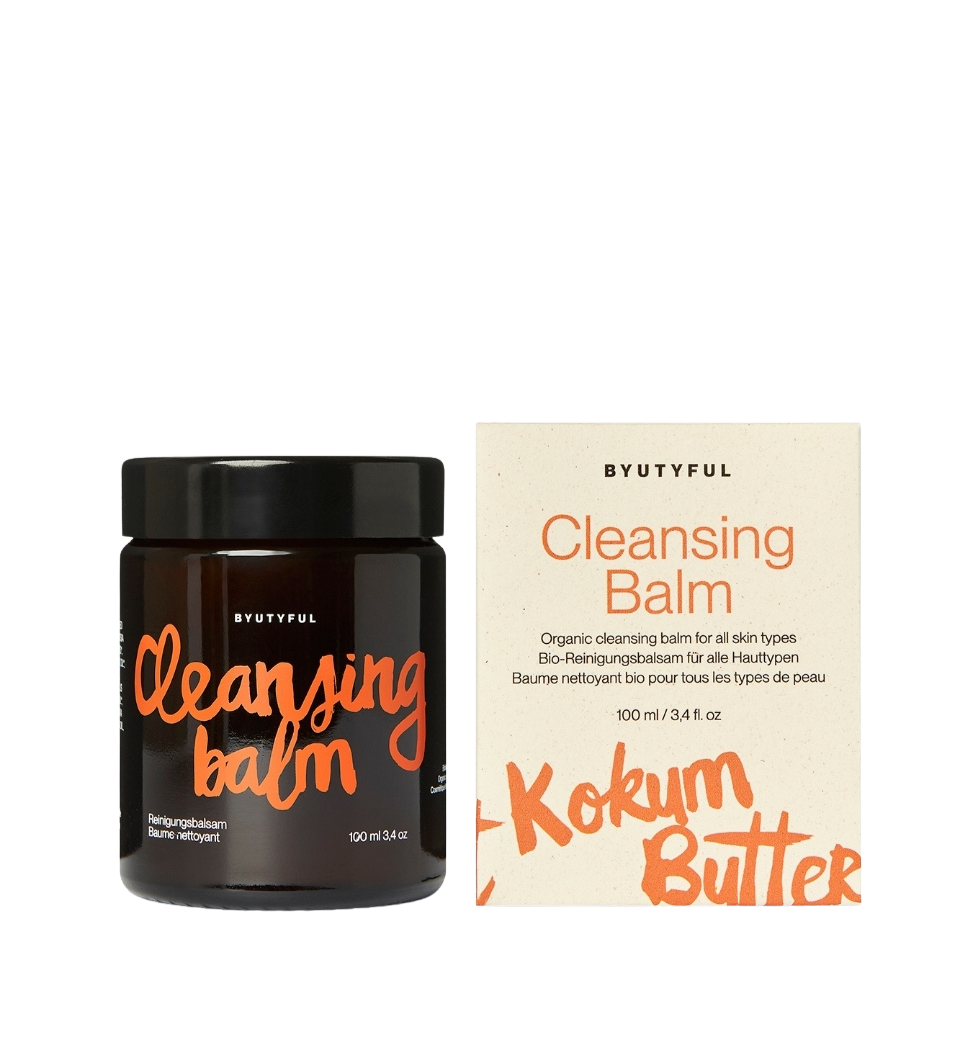Your ultimate guide to the Oil Cleansing Method
The Oil Cleansing Method, as the name suggests, involves cleansing your skin using oils. Unlike conventional cleansers that contain surfactants, which create foam but can also dry out and potentially stress the skin, the Oil Cleansing Method utilizes natural plant oils.
You typically use oils for skincare and may wonder how they can effectively cleanse the skin? In this post, you’ll learn how the Oil Cleansing Method works, its advantages over traditional cleansing with surfactants, and why it benefits all skin types. I hope that after reading this, you’ll be eager to give it a try. Because between us, I love the Oil Cleansing Method – it’s been a real game-changer in my skincare routine. Shall we dive in?
How does the Oil Cleansing Method work?
The Oil Cleansing Method (OCM) is a natural cleansing technique that relies on pure plant oils to remove dirt, makeup, and excess oil from the skin. Conventional cleansing products like foams, gels, or creams typically contain surfactants, which cleanse the skin but can also compromise its natural protective barrier. When surfactants are too harsh, the skin may feel rough, tight, and even itchy afterward. Over time, these cleansing agents can exacerbate skin issues such as dryness, breakouts, excessive oiliness, and sensitivity by disrupting the skin’s microbiome, the protective flora on our skin. In contrast, OCM harnesses the power of oils to gently cleanse the skin while respecting its natural functions.
Oil binds oil - so simple, so effective
The Oil Cleansing Method operates on a simple yet effective principle: oil attracts oil. This means that the natural oils used in the cleansing blend attract and gently remove excess oil from the skin without disturbing its natural barrier. This oil blend is gently massaged into dry skin, loosening dirt, excess oil (such as sunscreen residue), and makeup. Subsequently, a cloth soaked in warm water is placed on the face. This process opens the pores, allowing the cleansing oils and impurities to be thoroughly removed. The Oil Cleansing Method is essentially a respectful way to cleanse the skin, as it cleanses without disrupting its highly complex, natural functions. You can feel the difference, as the skin feels smooth and supple after cleansing with oils – a feeling of happiness rather than dryness.

Benefits of the Oil Cleansing Method for all skin types
If you’re thinking that the Oil Cleansing Method is only suitable for dry skin, please read on. In fact, all skin types benefit from oil cleansing – from dry to oily and sensitive to acne-prone. These various skin types and conditions result from an imbalance in the skin. As you learned earlier, OCM respects the skin’s natural functions. That’s why it can be a crucial step toward achieving balanced and healthier skin.
Every skin can truly benefit from these advantages of the Oil Cleansing Method:
1. The OCM soothes skin & soul
The Oil Cleansing Method is overall very gentle and soothing, even for the soul. Skin prone to redness can find calmness during cleansing, which is usually a stress factor. Additionally, you can take a moment to relax as the warmth of the face cloth releases the essential oils, enveloping your senses. Inhale, exhale. Facial cleansing can be so delightful!
2. The OCM promotes circulation for glowy skin
The massage movements stimulate the skin’s circulation, allowing the oils to penetrate deeper into the skin. This helps prevent blemishes, stimulates the skin’s regenerative powers, and improves its overall appearance. You’ll notice this, especially after cleansing, as the skin feels smooth and supple. At the same time, the selected oils help maintain the skin’s natural pH balance, allowing it to better absorb subsequent skincare products.
3. The OCM keeps the moisturizing level high
Feelings of tightness after cleansing are uncomfortable and indicate that the cleansing process was too aggressive for the skin. Especially for those who spend a lot of time indoors, it’s essential to ensure that the skin remains adequately hydrated and minimize additional stress factors. Indoor environments, air conditioning, and central heating are stressful enough for the skin. They require a gentle, moisturizing facial cleanse. The oils not only clean the skin’s surface but also leave it feeling soft and nourished, binding moisture and protecting against dryness.
Which oil is suitable for the Oil Cleansing Method?
This brings me to my final point that I’d like to share with you here: Which oils can you use for the Oil Cleansing Method? It’s a matter of preference. Neutral oils like sunflower or jojoba oil work particularly well. They can be mixed with other oils to tailor them to your specific skin type. Personally, I’m a big fan of cleansing balms instead of a blend of liquid oils. The balm has the advantage of not slipping through your fingers. Liquid oils tend to do so quickly, and before you know it, half of it ends up in the sink instead of on your face. A balm is a mixture of semi-solid plant butters (such as shea or kokum butter), liquid plant oils (such as safflower or castor oil), and sometimes very firm waxes (such as beeswax or carnauba wax). These are all plant oils with different consistencies, which, when combined, yield a soft but not liquid balm. It counts just as much toward the Oil Cleansing Method as blends of purely liquid oils – only with a different, and in my opinion, more practical texture.
Overall, the Oil Cleansing Method is a respectful, gentle, and effective way to cleanse the face suitable for all skin types. Unlike many conventional cleansing products, the Oil Cleansing Method thoroughly removes impurities, makeup, and excess oil without drying out the skin. The natural oils help maintain its natural protective barrier while moisturizing the skin’s surface. Feelings of tightness after cleansing are usually a thing of the past with the Oil Cleansing Method. Sounds good, right? Are you eager to give it a try?

